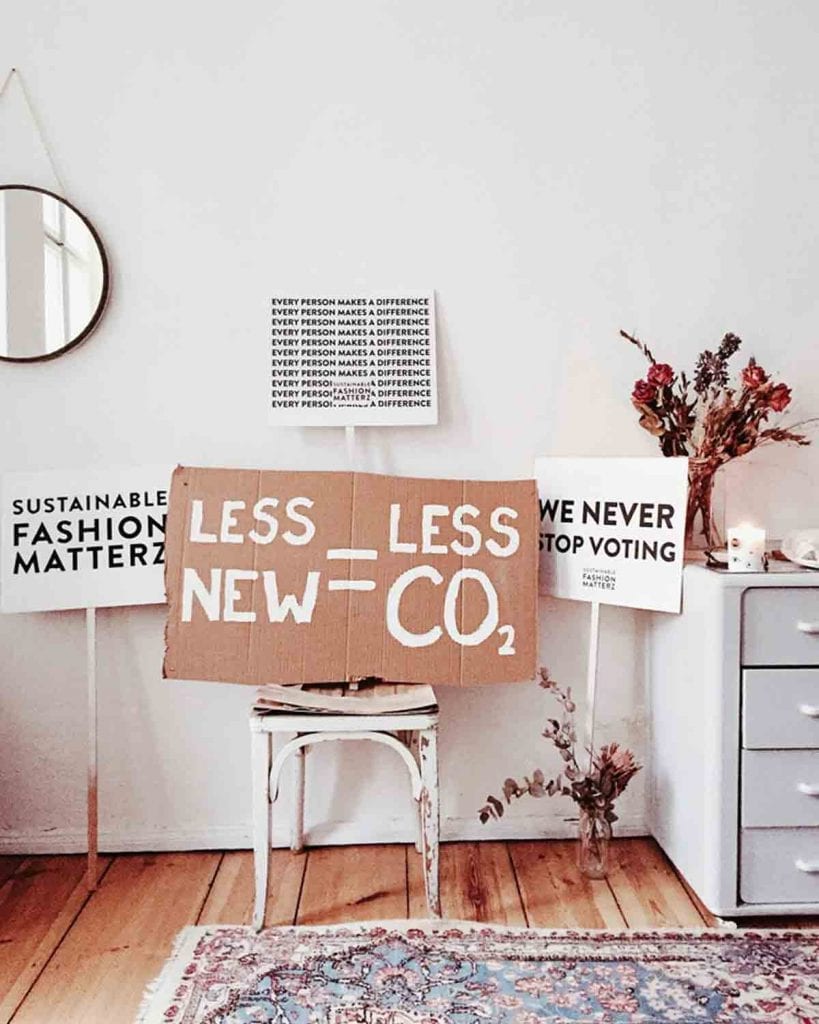Everyone wants to wear something that makes them feel good and also represents their values, that’s why working on creating your sustainable wardrobe is an ongoing project. A sustainable wardrobe does not mean you need to buy lots of new items, however when you do buy new, you should invest in high-quality items that you can wear again and again. Here are a few easy steps to take when working on transitioning to a more sustainable wardrobe…

Step 1: Learn to take care of your clothes
It is critical to take care of your garments so that they will last longer. Instead of tossing them away, they should be gently washed, ironed, and repaired as needed. Proper clothing maintenance will result in less wear and tear and the need to replace your garments more frequently. Wash your clothes less often on a lower temperature to avoid wasting water, to reduce your carbon footprint and to help your clothes last longer. If a pair of shoes has a hole or the soles are giving out, take it to a repair shop that you can trust and see if they can be fixed. After all, shoes worth wearing are worth repairing.
Step 2: Choose quality over quantity
There’s an adage that goes, “cheap is expensive.” Spending more on clothes that last longer is preferable to spending less on garments that wear out soon before you’ve had enough of them or before they rip! In all parts of life, quality always trumps quantity, and picking quality pieces for your closet is one approach to construct a long-lasting wardrobe. For women, we can start with our handbags. Begin by investing in ONE beautiful bag that’ll match everything. Online shops like Mirta offers Italian leather handbags that are among the best you can get for the price. Once you got through your handbags, go through your basic necessities like t-shirts, sweaters, jeans, and let the process begin!
The fashion industry is responsible for 8% of carbon emissions
– UN Environment 2019
Step 3: Avoid impulse buying
It is extremely risky to spend your money on garments without first considering your options. One, you’ll end up with a closet full of items you don’t need or wear, and two, it’ll be a waste of your hard-earned cash! Always try to purchase clothing that you will wear throughout the year rather than clothing that you would wear for a single occasion. If you know you need something, go out and look for that specific item and try your best not to get distracted by some sweater that, let’s be honest, you really do not need. Make wish-lists and have a”cooling off” period, take that time to consider your purchase and if you return to the wish-list a week or two after and still need the item, then go for it.
Step 4: Donate or rent out unwanted clothes
The good news is that your unwanted garments can always be repurposed by someone else. Donate them to a charity or thrift shop so that they can be used by someone else instead of being thrown away. You can use platforms like Thrift+ who will sell your item and donate a % of the cash to a charity of your choice, whilst you get credits to buy a different item on their site. Most of the time, garments take a long time to degrade, this will prevent them from being thrown away and create a more circular economy.
93% of brands surveyed by the Fashion Checker aren’t paying garment workers a living wage
– Fashion Checker
Step 5: Invest in eco-friendly brands
You may now go out and get the clothes you need once you’ve streamlined your closet and figured out exactly what you need in it. Clothing manufactured from organic cotton, tencel, or recycled fabrics use less water, resources, and chemicals, so buying from eco-friendly brands is a great idea. Be conscious of their labor laws too, being sustainable and eco-friendly also means companies need to meet basic human rights standards for their employees and ensure fair treatment.
Building a sustainable wardrobe has numerous benefits, one of which is that it is very environmentally friendly, and you will be delighted with your clothes and accessories. Building a sustainable wardrobe entails conserving a significant amount of money that could have been spent on useless items but also helping the planet just a little bit.
Words by Mary Davis. Photography by Cherie Birkner.




